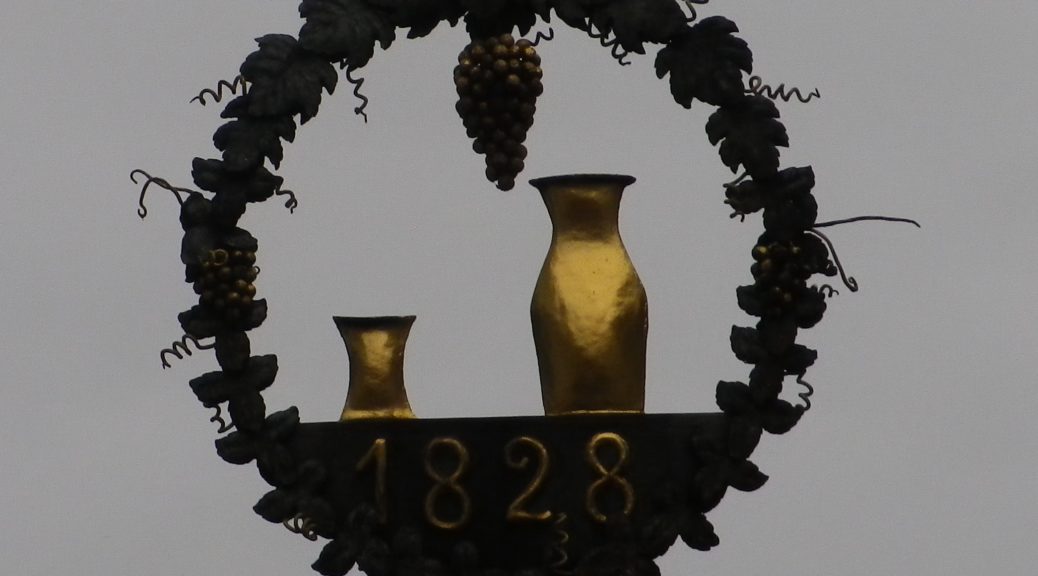What I Learned
Franconia (Franken, in German) is one of Germany’s 13 wine regions. Within this region there are three districts. Two of the three follow along the Main, a peaceful, beautifully winding river that ultimately flows into the Rhine by Frankfurt. Three consecutive bends form a huge triangle of land, and the wine district along the river in this area is known as the Maindreieck (Main Triangle).
The most important and undoubtedly best-known town for wine culture in this area is Wuerzburg. However, towns within a short distance upriver on this same leg of the triangle are also well known, as they contain within their precincts some highly regarded vineyards in this district. Just south of Wuerzburg, in the wine village of Randersacker, there are three: the Randersackerer Teufelskeller, Pfulben, and Sonnenstuhl. Eibelstadt lays claim to the parcels of Kapellenberg and Eibelstadter Moenschsleite, which stretches almost to the very gates of Sommerhausen; and finally, just north of one of the triangle points of the Main, lies the village of Sommerhausen, with its Steinbach and Oelspiel vineyard sites.
Geologically speaking, this area contains one of Germany’s premier concentrations of Muschelkalk in a wine district. This is a limestone made primarily from deposits of shell over the eons. The limestone hills run above Eibelstadt to south of Sommerhausen. Throughout history, locals have quarried it for building material, and planted their vines in it. While the quarries are, for the most part, long inactive, the limestone continues to impart a distinctive note to the wines of these villages.
Although wine cultivation in this small area dates to at least the middle medieval era, its heyday was in the 1500s, when highly prized wines were shipped abroad. But, certainly with the phylloxera epidemic in Europe in the late 1800s, followed by the world wars in the first half of the 20th century, wine production here became virtually non-existent. However, since the 1960s, the area has focused anew on viticulture, and quality has steadily improved. One of the Sommerhausen wineries, Weingut Schloss Sommerhausen, is a member of the Verband Deutscher Praedikats- und Qualitaetsweingueter (VDP), a prestigious association of German wineries developed to produce and promote quality regional wines and wineries.
What I Tasted
2016 Zinnober, Trocken, Deutscher Qualitaetswein, Weingut Schloss Sommerhausen: A dry, red wine cuvee (Domina and Spaetburgunder), with dark garnet red color; aromatic red berry nose, with red berry, vanilla and sweet spice flavors; medium minus tannins, and a smooth, medium length finish.
2014 Silvaner, Sommerhauser Oelspiel, Trocken, Deutscher Qualitaetswein, Weingut Ernst Gebhardt: A dry white wine with medium lemon-yellow color; a floral nose, with floral, green apple and slight spice notes; medium plus acidity.
2014 Domina, Eibelstadter Moenschsleite, Trocken, Deutscher Qualitaetswein, Weingut Max Markert (Eibelstadt): A dry red wine with medium plus ruby red color; a spicy, wood and plum note, with tobacco, stewed plum and spice flavors, medium tannins, with a very smooth, long finish.
2014 Domina, Trocken, VDP Gutswein, Deutscher Qualitaetswein, Weingut Schloss Sommerhausen: A dry red wine with medium plus garnet red color; a red berry and pepper nose, with red berry flavors, and hints of wood and pepper; medium tannins.
2013 Spaetburgunder (Pinot Noir), Sommerhaueser Steinbach, Trocken, VDP Erste Lage, Deutscher Qualitaetswein, Weingut Schloss Sommerhausen: A dry red wine with light plus ruby red color; nose of red berries and vanilla, and sweet spice and cherry flavors; medium tannins.
2013 Fruehburgunder (Pinot Meunier), Deutscher Qualitaetswein, Weingut Schloss Sommerhausen: A dry red wine with light garnet red color; a nose with tobacco, cherry, leather notes, and leather and cherry flavors; mild tannins. This unusual and interesting wine was crafted to pair with chocolate.
